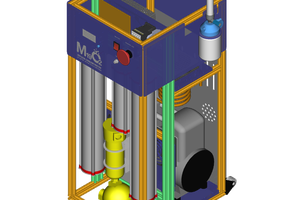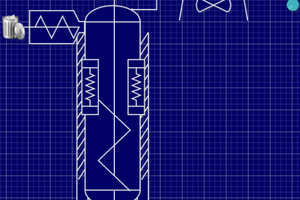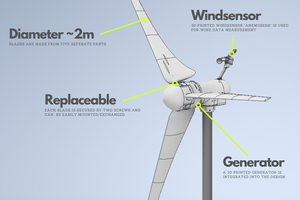Preliminary Insights & Research
In March 2020, when the world was hit by COVID19 - Maker’s Asylum started the M19 Initiative to support the front line workers with medical grade equipment. The project started with making faceshields inside a makerspace and slowly grew into a large movement of distributed manufacturing when the team open sourced their designs in order to activate over 42 cities, towns and villages in India to make faceshields locally for their local hospitals. Then they went on to work on various other medical grade devices and during the second wave in April 2021 they worked on Oxygen Concentrators and activated over 150 organisations to make them locally in India via the same principles of open sourcing the design and decentralised manufacturing. During this time India was importing large amounts of oxygen concentrators from other countries including China, USA and France. In Goa, the Rotary Club of Margao had procured oxygen concentrators as part of their CSR to donate to hospitals and a few hundred of them had stopped working. In June 2021, the team at the Rotary Club reached out to Maker's Asylum to understand if they could help them fix these broken oxygen concentrators. That’s when they started working on understanding if there are many more such cases in India and floated a small request sheet to procure data from a few hospitals in different parts of the country.
Following were the initial requests of repair received by the Maker’s Asylum team :
Location | Broken Oxygen Concentrators (#) |
Sant Kabir Nagar, Uttar Pradesh | 2 |
Pune, Maharashtra | 18 |
Margao, Goa | 20 |
New Delhi, New Delhi | 15 |
Hyderabad, Telangana | 5 |
Colva, Goa | 5 |
Jamtara, Jharkhand | 5 |
Dar es salaam,Tanzania | 20 |
TOTAL | 90 |
This data led to the realization that it is a possibility that there were many more oxygen concentrators that did not work inside hospitals and if there could be a way to help local communities learn about repair and help fix these.
Results from Repair Cafe :
As part of the next steps, 3 repair cafes were hosted. 2 physically at a makerspace or a fablab and 1 virtually over an online meeting with individuals, makerspaces, and organisations from different parts of the world.
1. Repair Cafe in Goa
Date | 19th & 20th October 2021 |
Location | Maker’s Asylum, Moira, Goa (Makerspace) |
Broken Oxygen Concentrators Received | 7 |
Concentrators Fixed | 5 |
Number of participants | 10 |
Subject Matter Experts | 2 |
General Issues | Incorrect design of compressor mounting. It was not designed to handle transportation damages hence needed to be mounted properly for the oxygen concentrator to function |
Cause for not able to fix the 2 oxygen concentrators | The compressors were completely broken and needed replacement. Hospital was informed to call for new compressors. |
2. Repair Cafe in Pune
Date | 30th & 31st October 2021 |
Location | DIY Lab at Vigyan Ashram, Pune (Makerspace) |
Broken Oxygen Concentrators Received | 18 |
Concentrators Fixed | 0 |
Number of participants | 20 |
Subject Matter Experts | 3 |
General Issues | Poor Material Used in Design - Zeolite Sieves End Caps were made out of plastic and were breaking because of stress and causing oxygen leakage in the concentrators. |
Cause for not able to fix the 18 oxygen concentrators | Needed redesigning with metal parts for the Zeolite end caps to not break. |
3. Virtual Repair Cafe
Date | 10th of December 2021 |
Location | Online |
Agenda | To share insights and knowhow on how to fix an oxygen concentrator |
Number of participants | 30 |
Designed for | Makerspaces, Fablabs which can act as conduits to the Right to Repair movement in different parts of the world and can also skill communities to help repair and reuse |
Participant Profiles
Testimonials by participants
Anindya Mukherjee - DIVE Instructor, Goa Aquatics
I do a lot of servicing of compressors, regulators, and all related equipment to Scuba Diving. So what Makers are doing is very similar to me, we use molecular sieves, compressors...
Read more » Vaibhav Chhabra
Vaibhav Chhabra
 Mei-Li Hey
Mei-Li Hey
 Anool Mahidharia
Anool Mahidharia
 Leonardo Zuniga
Leonardo Zuniga
 Fabian
Fabian